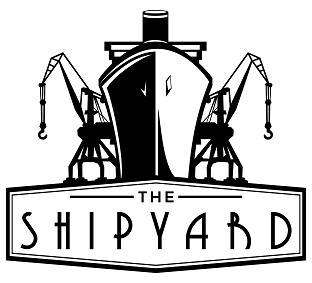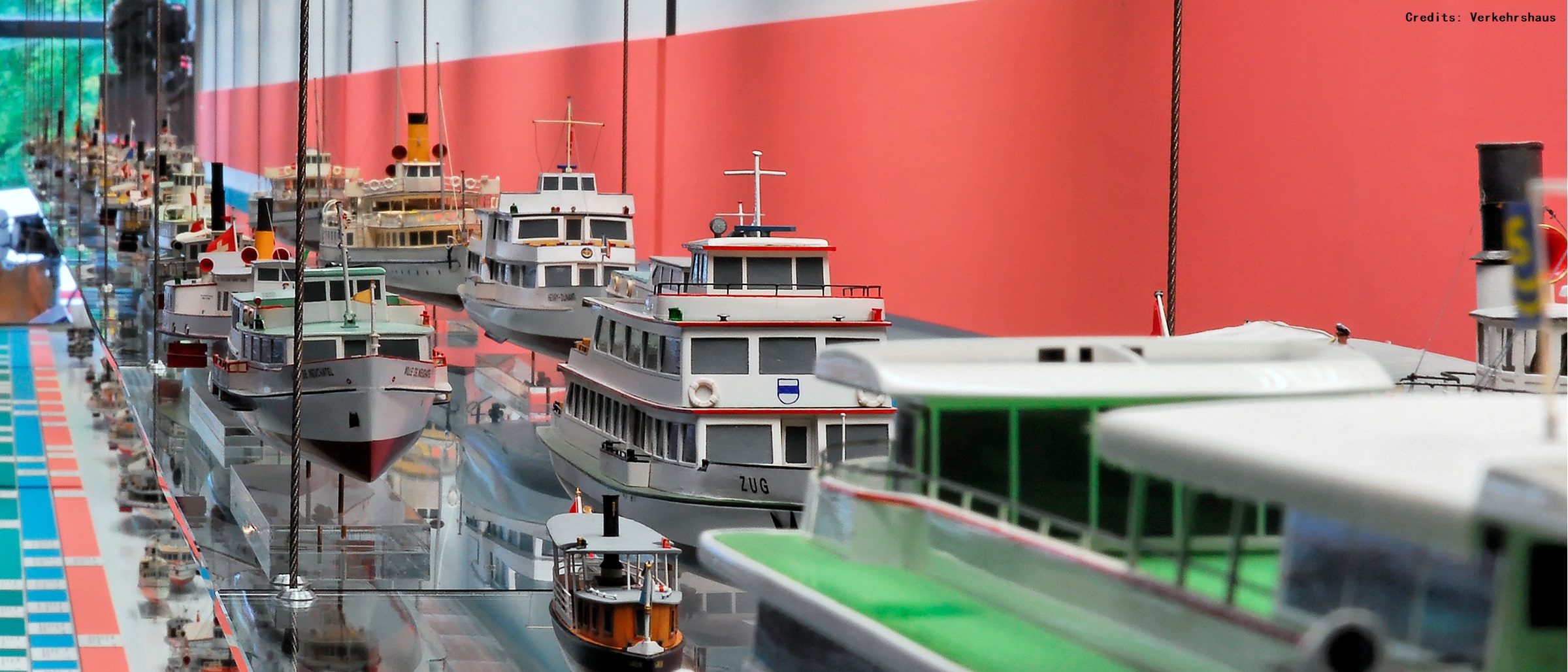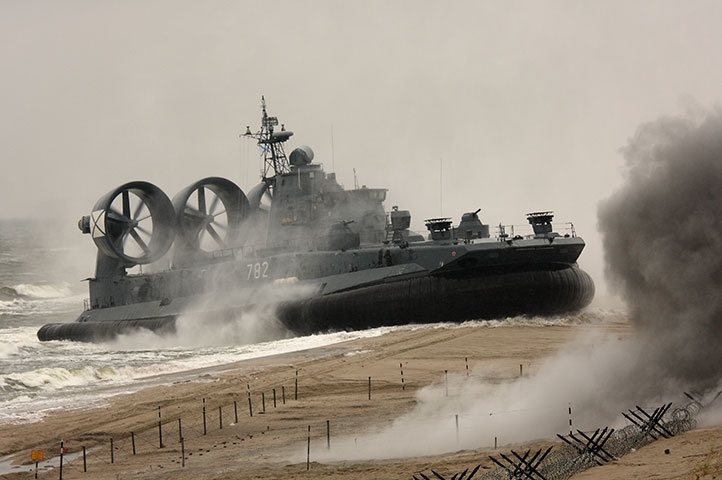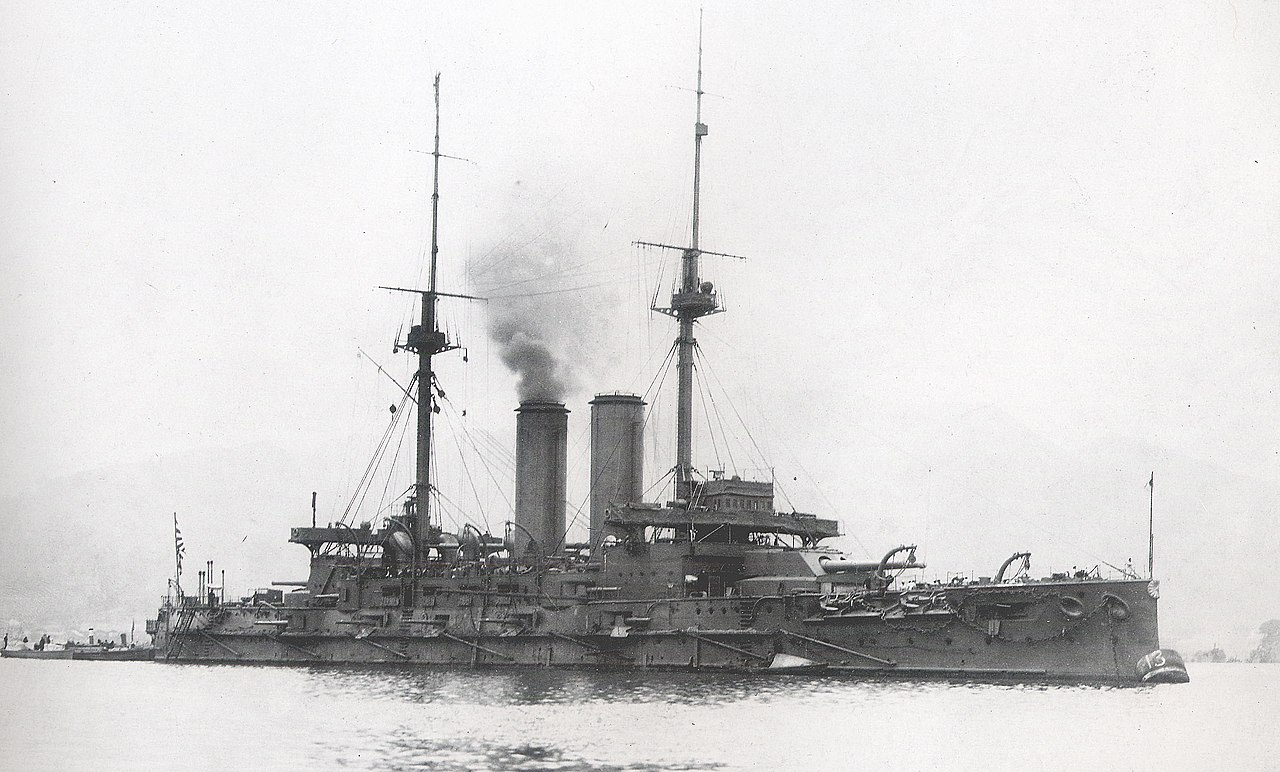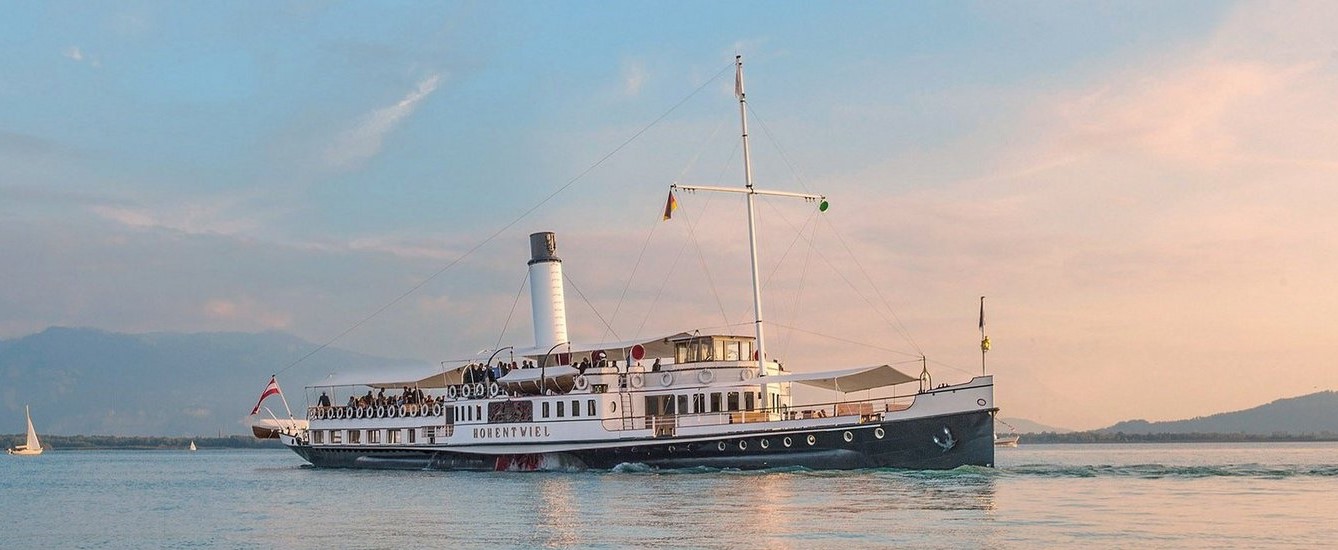Fathers are a peculiar species. They tend to recall and regret their mistakes as parents, often overlooking the things they did right. Focused on the grand strategy, our dads rarely suspect the little, spontaneous moments that had a profound impact on our lives.
An early memory I cherish is my father drawing an atom for me at the breakfast table, answering my silly questions and sharing his vision on the future of technology. Later, as my family moved to Lucerne, he often took my brother and me to the Swiss Museum of Transport, wandering through the exhibition halls and explaining how things worked with contagious enthusiasm.
So, if you are wondering how to spark your kid’s curiosity, why not book a trip to the Verkehrshaus? Neither of you will regret it, and here is why.
Paddle Steamer Rigi
Built at the Ditchborn & Mare shipyards in London, the DS Rigi is the world’s oldest remaining flush-deck side-wheeler steamer, as well the oldest existing engine-driven form of transport in Switzerland. She was launched on Lake Lucerne in March 1848, with the primary purpose of transporting goods and animals. Before the construction of Alpine railways, Lake Lucerne was an important stage on the European trade routes from Basel to Milan and from Rotterdam to Genoa. In 1863, when Thomas Cook led his first group of British tourists through the Swiss Alps, the eight travelers crossed the lake on the Rigi.
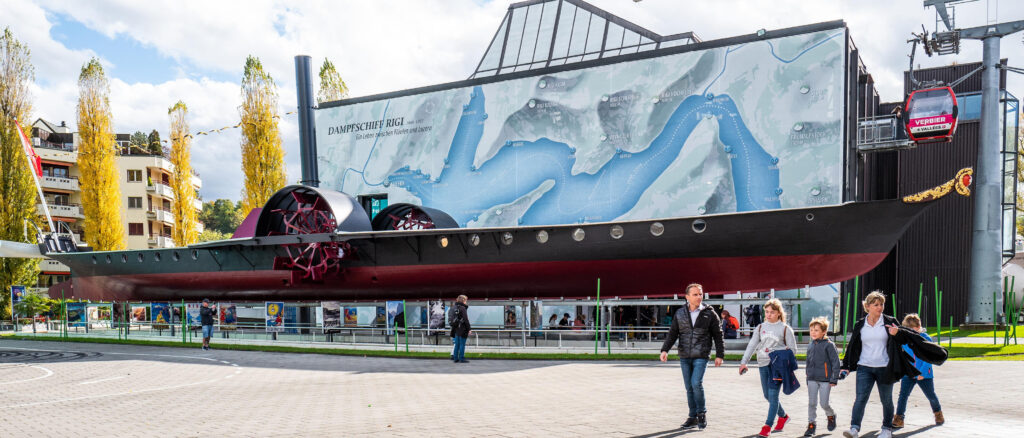
The museum displays the relic in a fun and interactive way – a water canal with small boats surrounds the ship, so that the more adventurous visitors can climb into a boat and board the steamer by climbing up a ladder. A more conventional entry is offered through a connecting gangway in the museum’s Navigation Hall.
Sulzer Steam Engine
The Navigation Hall also houses the inclined two-cylinder compound steam engine of the paddle steamer DS Pilatus. Built in 1893, this 380-psi steampunk icon kept the Pilatus’ paddles turning until its retirement in 1966. Visitors can see the engine moving every hour.
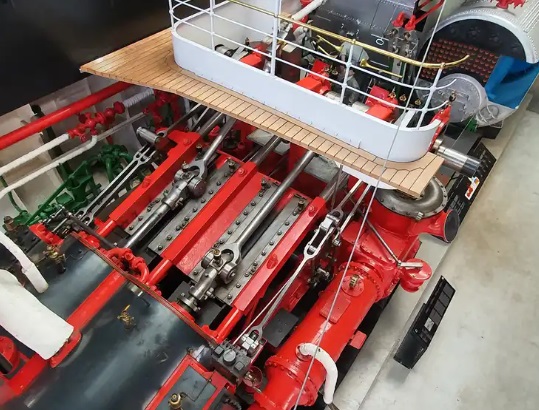
Nautirama
Walk through a Belle Époque style paddle steamer salon, while learning how the dawn of steam power transformed entire regions around the Swiss lakes. Light and sound effects take you back on a journey through the Golden Age of industrialization, inventions, and human progress.
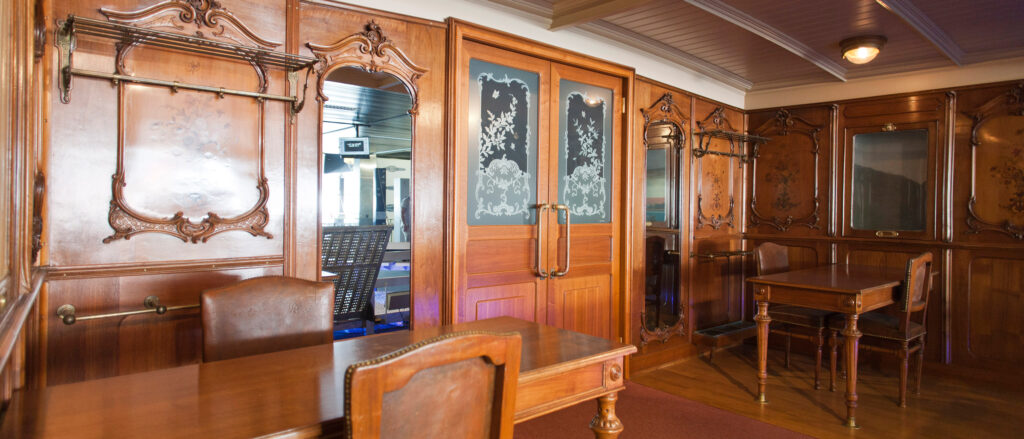
Mésoscaphe Submarine
The Mésoscaphe was designed by Auguste Piccard in 1963, with his son Jacques bringing his father’s design to life in 1964. The historic submarine has completed more than a thousand dives in Lake Geneva and has taken part in marine research expeditions around the world. It is the first and largest submarine ever built for tourism.
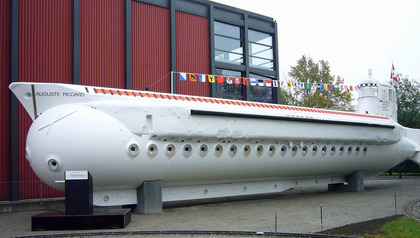
Waterways Lock
A moving model of the Birsfelden river lock demonstrates how boats get elevated from one canal to another, overcoming differences in water level.
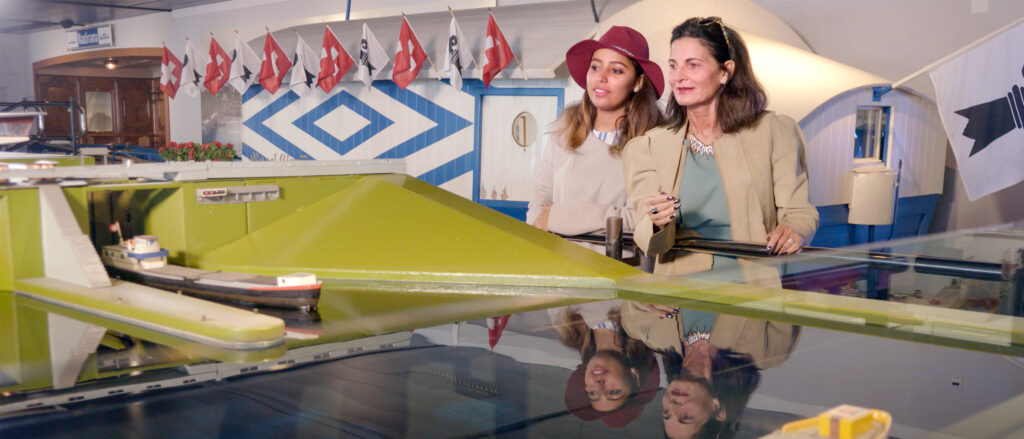
Paddle Steamer DS Uri
Want to sail on a historic steamer after your visit? As you leave the museum, cross over to the Verkehrshaus Lido quay and board Switzerland’s oldest paddle steamer in operation – DS Uri. In the vessels belly, you can stand by a railing and watch the original 1911 Sulzer steam engine in action. Glass windows on both sides allow passengers to observe two red paddle wheels turn in the water. For those who need a break, the beautiful dining salon on board offers drinks and food. The Uri is the only Swiss paddle steamer that also operates in the winter.
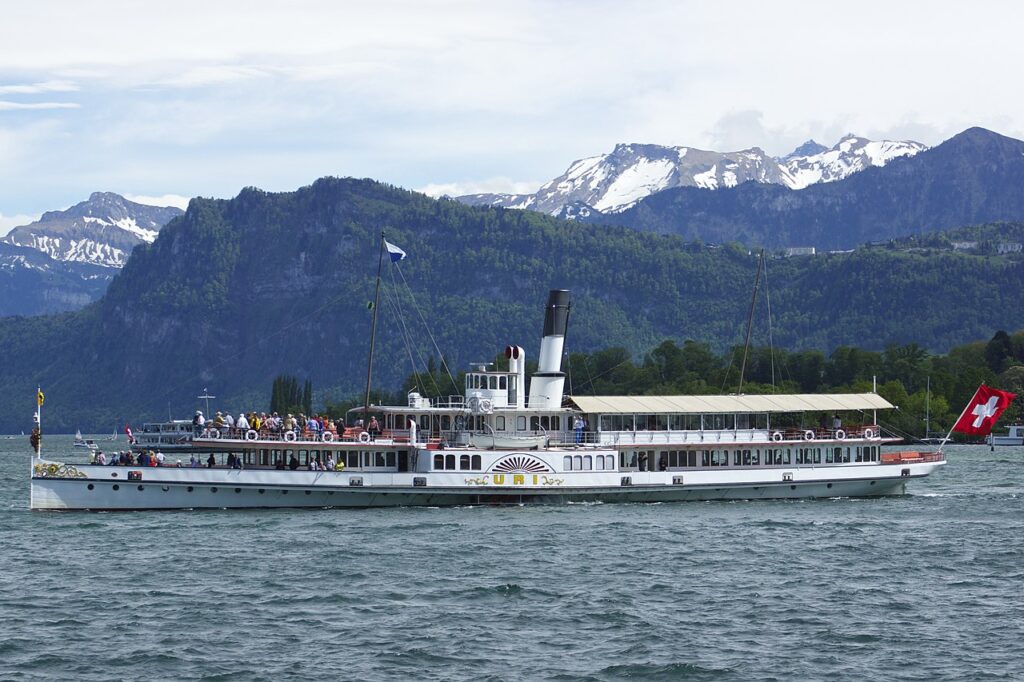
While this article was focused on the maritime section of the museum, car and train lovers will not be disappointed either. And while I often went there with my father, the museum offers an equally warm welcome to mothers! What is your favorite transport or maritime museum?
The Shipyard!
Want to read more? Find the most recent posts below!
-
The Most Powerful Landlocked Naval Fleets
Lack of access to an open ocean does not eliminate a country’s responsibility for maritime defense, and although lakes and rivers have fewer threats lurking Read More
-
Great Japanese Ships That Are Not Yamato: Mikasa
We could talk for days about the near-mythical Yamato, without saying anything new, so how about we have a chat about another epic Japanese ship Read More
-
13 Fascinating Paddle-Wheel Steamers That Are Still Around
On 15 May 1839, the first propeller-driven steamship SS Archimedes pulled away from her berth in Gravesend. By the time she arrived at Portsmouth, the Read More
